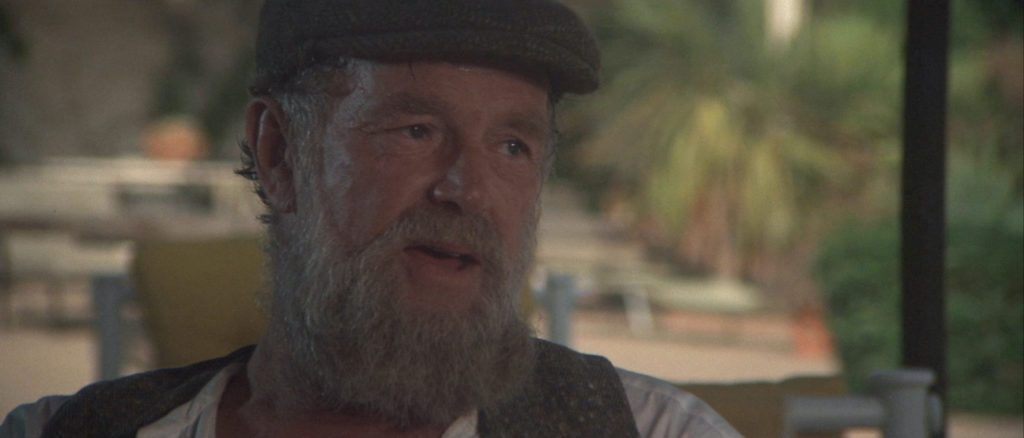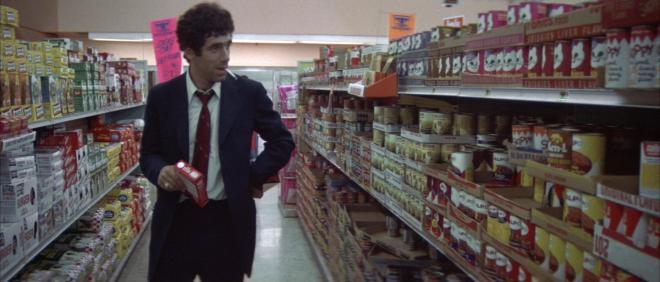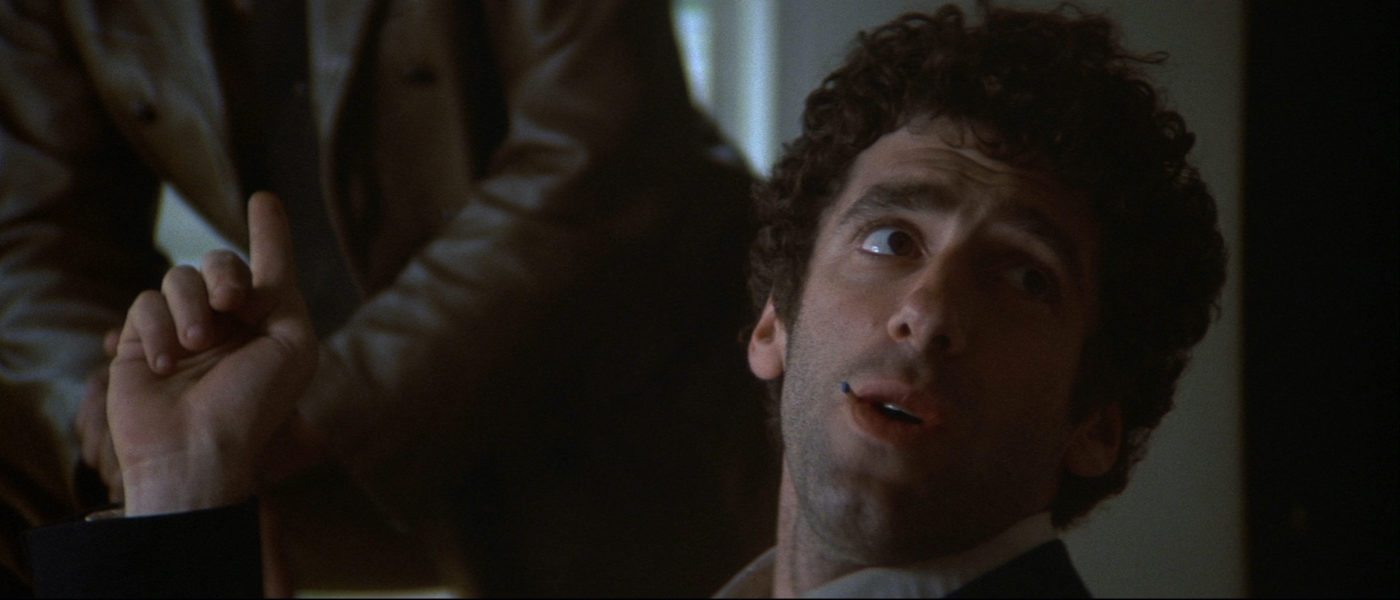Different From Some Of The Times, But Not Different From All The Times
DIRECTED BY: ROBERT ALTMAN/1973
STREET DATE: DECEMBER 7, 2021/KINO LORBER STUDIO CLASSICS

Robert Altman, to the uninitiated, made the same movie over and over through the ‘70s: stoned-seeming people wandering around a thin plot trying to escape the zoom shot they’re caught in. To the initiated, perhaps some tacit agreement, but is there anything better than watching mellow people unpeel into passionate enforcers of their own personal code? Who would you go to for help if you needed to escape to Tijuana from your self-made troubles? You’d go to the guy who makes a 3am trip to the store for his hungry cat. That would be your pal Philip Marlowe, private eye, perpetually dead on his feet, muttering jaundiced remarks at the scenery that trails behind his meandering feet. But like other Altman heroes of the era – Hawkeye, McCabe, Popeye – never with any real malice. More like street smart but perplexed, mostly at the lengths the stupid people will go. They are quiet, lone-wolf Bugs Bunnies, with wit to wield when a gun is scarce. Marlowe notices, might disagree with the scenery, but is a nice guy about it, forever high on a never-ending drag hanging from his bottom lip. So he gives the guy a ride from L.A. to the Mexican border, then gets picked up as an accomplice to the murder of the guy’s wife. Does he rat? No, he trusts his gut, that he couldn’t have done it, and when told his friend has committed suicide, doesn’t buy the line, and he hits the trail.
One of the many joys of The Long Goodbye is letting go early and letting the roaming, zooming camera carry you through the plot. Like classic noir, you’re never any more sure than the protagonist what’s going on, but you’re so curious where it’s all going that you don’t mind the occasional knuckle to the ribs or bumper to the shins. Another joy is Leigh Brackett’s script, based on Raymond Chandler’s novel of the same name, that gives some structural heft to the more casual impulses of Altman’s direction. The alchemy of the two creates the great film noir hangout movie, all the sharp-angled expectations of the old genre but with some loose new trappings, and with a hero that embodies all the easygoing animus of the entire running time of Rio Bravo (another Brackett script). This Marlowe is the logical ‘70s extension of all the men who’d played him in the movies before him – of course Bogart, but also Dick Powell, the Montgomerys Robert and George, Philip Carey, and just a few years before, James Garner, an iteration predictably more proto-Jim Rockford, but still a handy, sarcastic way station between the old-school tough-but-classy and the completely disheveled.

And yet it’s not just a stroll down chiaroscuro’d sidewalks. Like classic noir, the movie is concerned with disillusionment and corruption. Much has been said about Marlowe waking from a hard sleep at the top of the movie, that he’s a man from a different time emerging into a world that’s a dark counter to the moral code of some previous era. Altman himself said he’d refer to the character as “Rip Van Marlowe”, unaccustomed to, and forever bemused by the lack of moral apparatus in this strange new world. Noirs of old would often force former soldiers or law men – men of rules and temperament – to wallow in a post-war landscape of moral degeneration. Here in Marlowe’s ‘70s, the disillusionment is deeper – an entire culture crawling out of a decade of political assassinations, mass cultural upheaval, and the demoralization of the Vietnam War. And as a countercultural recharacterization of the idea of heroism at all, it can be construed as the first salvo of the righteous in the coming Watergate scandal. Vilmos Zsigmond’s blurred-out backgrounds catch the perfectly wide-eyed aspects of our hero’s mind and code, set atop a floating sea of smeared colors like some baked bas relief; we feel, like Marlowe, that we’re completely right, but awash in that other feeling of being in the entirely wrong place for too long.
Yet another joy of The Long Goodbye is that it clearly wants us to know we’re watching a movie. Sitting perfectly comfortably in that pocket of American film history between the demise of the studio system and the rise of the blockbuster, Altman connects with the by-then movie-steeped and movie-savvy audience by thrilling it with recognition of, even superiority over, the happenings on the screen. He knows we know it’s a detective movie, so he gives us all the things we expect, but he gives them to us with the nod of a trickster uncle, taking the tropes (say, the P.I. will always get knocked out at some point in the film) and giving it a little dollop of unreal (Marlowe lands on his back unconscious but with his cigarette still upright in his puckered lips). More famously, it gives us the same musical theme (it’s the title of the film set among music and lyrics by John Williams and Johnny Mercer) in about as many ways as there are sequences in the film: as the jazzy opening credits number, as grocery store Muzak, as a doorbell jingle, as marching band song, as a song on the radio, as a whistle, etc. – but to what purpose other than to continually remind you of the artifice of moviemaking while also…and this is Altman’s genius…reinforcing the bleary, unmoored, unpredictable, and unexplainable heart of the mystery. But it’s all done in cinematic terms, most effectively exploited on behalf of its own genre antecedents: even after the final dramatic shot is fired, Altman borrows The Third Man’s closing credit, tree-lined proscenium to return his reimagined neo-noir back into the cradling arms of the genre that nurtured it into being.

A final joy, among many others not mentioned here, and certainly not the least, is the unstopping litany of great acting, starting with Elliott Gould’s sauntering jib-cutting as Marlowe, a leaning, side-eyed pitch so perfectly aligned with the filmmaking style that he almost bleeds into the background. In fact, the first twenty minutes has the energy of a man completely swallowing his own performance: his flip, mumbled commentary is the emaciated remains of what once was a plot-driving voice over; his constant match striking is the resigned leftover ritual of the gumshoe’s bygone clue flipping; his gaze, from the top of his eyeballs, the internalized insecurity that once was the constant patter of righteousness. And his perpetual stubble less like Bogie’s Marlowe than Bogie’s Fred C. Dobbs, often manifesting the same desperation. Meanwhile, all of Sterling Hayden’s big-skulled belligerence is used to fill the wide screen in such a pleasingly ominous way we’re actually lulled into perverse sympathy for the wife-beating, wife-cheating lout, and his drunken tirades are almost off-putting but for the fact that he’s a blocked writer, and then you know he’s as much a construct as Marlowe, and that the two are just part of a shopworn-menagerie-in-hopes-of-refurbishing that also includes the chatty gangster (“Punch me in the stomach as hard as you can!”), the sinister psychiatrist, the playboy on the run, and the finicky cat. And it all melds together inside Altman’s unmoored frame, like it’s swirling the ingredients on a centripetal widescreen. The final result was panned at the time, but has come to be one of the muted classics of the era, Altman’s loaded mumble from the murky folds of an art form at once in tumultuous transition and shambling in perfect sync with its time.

Kino Lorber Studio Classics’ new special edition disc, from a new 4K master, is long on extras, some from older issues, including interviews with Altman, Gould, and Zsigmond, and some new, including various breakdowns of the careers of Altman, Raymond Chandler, and a deep-dive rumination on hard boiled fiction of all varieties and formats. Also new is a commentary track by film historian Tim Lucas, who among other things does a helpful comparison of the final film with the original Brackett script and the original Chandler novel. All in all, hours of masterclass level information to help make your long goodbye to the movie proper even longer.
The images in this review are not representative of the actual Blu-ray’s image quality, and are included only to represent the film itself.


